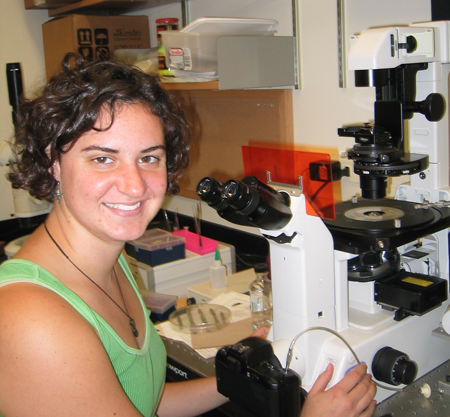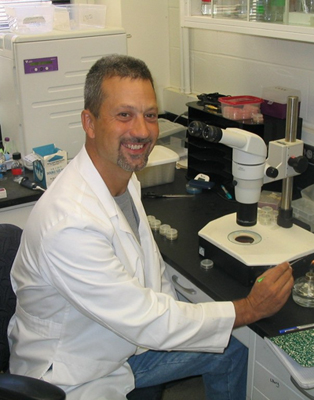Proton mediated cell-cell signaling event in C. elegans
Recent findings suggest that protons can act as a classic transmitters between cells in C. elegans. More specifically proton release from the intestine causes activation of the first contraction of the digestive motor program to occur. A sodium-proton exchanger located in the intestine is sending the proton signal. The exchanger’s activity must be precisely timed to initiate the contraction every 45-50 seconds. What controls the cyclic intestinal proton exchange? What activates the exchanger’s activity every forty-five seconds? Prof. Peters and her students have been working to discover the answers to these questions. She (and others) have demonstrated that both posterior body contraction and proton release parallel a cyclic intestinal calcium wave. Yet, what links the calcium flux to proton exchanger?
By analyzing a mutant with defects in posterior body contraction, we think that we’ve found one of the essential molecules linking calcium flux to sodium-proton exchanger activity. The molecule is a calcineurin B homologous protein (CHP). It contains EF-hand calcium binding motifs. When this gene is mutated a dramatic reduction of posterior body contraction results. To discover exactly how the mutation affects calcium and proton dynamics in the mutant animals we are using fluorescent imaging of live worms. Genetically engineered worms can be generated that contain fluorescent molecules whose properties respond to change in calcium or proton levels. Using these animals and some neat microscopy we can see in real time calcium and proton signals rise and fall in live animals. For this work we are working in collaboration with Keith Nehrke’s laboratory at the University of Rochester Medical Center. The lab has taken several trips to Rochester to make recordings using Keith's fancy microscope. With lots of data in hand, we head back to Oberlin where analysis the data takes place. We have also begun to address exactly what the calcineurin homologous protein does in the cells by trying to find its binding partners in the cell. We have been using an assay in yeast to find the binding partners.
Back to Research



